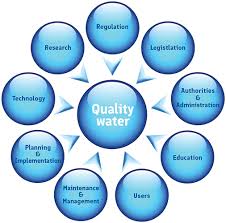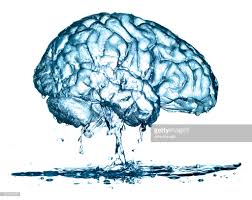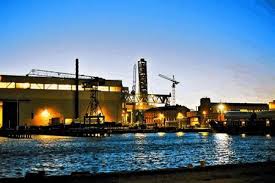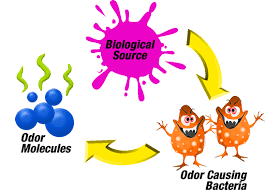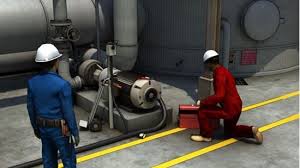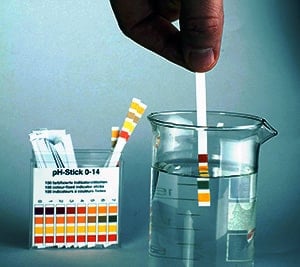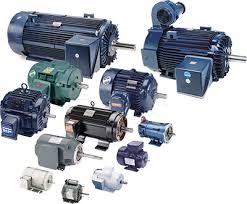The water treatment industry has developed and evolved over the years to continue to find new ways to produce degassed water,
Read More
Topics:
water quality,
degasification,
pH levels of water,
water treatment,
advanced treatment solutions,
water plant,
safety,
hydrogen sulfide (H2S),
Chemical Odor,
media packing,
pH levels,
Decarbonation,
dissolved gases,
wastewater,
Global,
carbon dioxide,
decarbonator,
degasifier,
gases,
RO membrane,
H2S Degasifier,
degassed water
Many types of water treatment systems depend on some type of media to provide the best performance required as it relates to water treatment and waste water treatment. For use in reverse osmosis there is a reliance on membranes which act as filters to separate the solids from the water. For ion exchange there are “resins” whether AION or CATION the resins works to treat hard and corrosive water. Degasification and decarbonation towers both require an internal media and sometimes this is referred to as “Random Packing” or “Loose Fill Media” and in this process the media acts like a traffic cop directing traffic.
In this case it directs the water on its way down and through a towers internals where it is constantly reshaping the water droplets over and over again forcing gas molecules to come to the surface edge of the water where they are removed. Carbon filters also require a media which is of course “Carbon”. The carbon media acts like a sponge absorbing the contaminants that you wish to remove from the water until it is saturated and must be replaced or regenerated. Even sand filters or pressure filters require a media.
Read More
Topics:
degasification,
water treatment,
water plant,
media packing,
Decarbonation,
ION Exchange Resin,
feed water,
wastewater,
decarbonator,
gases,
RO membrane
Ten years ago if I had purposed that one day our water would have artificial intelligence I think I would have been laughed out of the industry. But now, anything you can imagine with the new electronic revolution is possible because of the current revolution referred to as “The Internet of Things” (IoT). Placing nano-size SIP (Systems in a package) into a water stream and tracking its path or location or performing inspections on critical infrastructure or equipment is now a reality.
Read More
Topics:
degasification,
water treatment,
advanced treatment solutions,
water plant,
phosphate levels,
pH levels,
Alkalinity,
Global,
decarbonator,
degasifier
One of the largest consumers of energy in the US is water and wastewater treatment plants.
Because of the need for large horsepower pumps and blowers, a municipal water and wastewater treatment plant consumes a tremendous amount of kilowatt hours of electricity. The energy cost is factored into the “cost of production” of water or wastewater treatment, and the “rate base” charge is increased accordingly to the consumer.
Does Renewable Power Work in a Water Treatment Plant?
Because solar energy is “space intensive,” you do not see a lot of solar power being deployed across the USA at water treatment plants. In our opinion, this is a mistake, and most likely, the decision was made back when solar power output was much lower. With the increased efficiency of solar panels and decreased production cost, it makes tremendous sense to revisit the use of Solar energy to offset the operational cost of a water treatment plant or wastewater treatment plant operation.
Providing solar energy for specific pieces of process equipment is also a viable option when you consider deploying solar energy. For example, operating a Degasification tower or Decarbonator utilizing 10 350-watt solar panels will generate 3500 watts during peak daylight hours and enough to offset the cost of smaller horsepower blower motors. If the solar panels are configured as a canopy, they can also provide a nice shade or protective barrier above the piece of equipment if installed outdoors, as most packed column towers are located outside.
What about other forms of renewable energy? Do they work?
At water treatment or wastewater treatment facilities. Co-generation use has been around for many years at Wastewater plant facilities wastewater treatment plants. A cogeneration unit is a combination “Generator” to produce power and a “Thermal” energy source to produce heated water. The water can be used domestically or can be used to produce chilled water with the help of a Chiller system. The wastewater treatment plant provides a critical component by producing gases such as “Methane,” which can be used as a cogeneration unit fuel source. Water treatment plants do not produce methane or other combustible forms of gases like a cogeneration plant would produce, so you normally do not see Cogeneration system units deployed at a Water treatment facility.
Read More
Topics:
degasification,
water treatment,
water distribution system,
advanced treatment solutions,
water plant,
Decarbonation,
wastewater,
Recycling,
Global,
steam generation,
steam
Opting for the appropriate odor control scrubber can lead to significant cost savings!
We have discussed the importance of understanding the source and concentration of an odor issue before selecting the type of treatment or odor control system. In addition to these critical items is the consideration of operating costs.
Many types of odor control systems work and remove odors, but selecting and designing a system that works efficiently and effectively without breaking the bank can be challenging.
For a design professional and the system supplier, it is essential to consider what an owner, and their operators, will face to maintain the odor control system.
For example, carbon absorption has been around for many years and is a very effective method for removing noxious odors from an air stream. However, the use of carbon in municipal operations is seldom seen these days due to the extreme cost of disposal or on-site regeneration of the carbon once it has been spent. The same can be said about other odor control processes that utilize chemicals, such as potassium permanganate.
Read More
Topics:
water quality,
odor control,
water treatment,
biological scrubber,
water plant,
odor control scrubber
Water treatment in the Caribbean poses unique challenges due to the specific characteristics of the region.
Read More
Topics:
water treatment issues,
water quality,
degasification,
pH levels of water,
water treatment,
advanced treatment solutions,
water plant,
odor control scrubber,
pH levels,
Alkalinity,
Recycling,
Caribbean,
Global
Have you ever walked on a sidewalk or in a parking lot and passed by a lift station or manhole and noticed a smell so bad you thought you were going to pass out?
Most people who encounter these types of odors do not live in the world of designing and building odor-control treatment systems. For those of us who do we fully understand that when we encounter such a noxious smell it most likely needs an odor control system. It does not matter if the odorous smell is coming from an industrial water treatment process, food and beverage plant, wastewater plant, or from the off-gas of a “degasification process”. All of these types of industries and many more can generate odors and quite often these noxious odors must be addressed and treated because of either safety or public outcry. Many times odorous gases are generated as the result of processing and purifying drinking water. When water contains contaminants like hydrogen sulfide (H2S), carbon dioxide (CO2), or ammonia (NH3) there is a need to treat and remove these harmful elements from the water.
Odors come from many sources
When processing and purifying drinking water which requires pH adjustment by adding acid to lower the pH and allow for the removal of hydrogen sulfide (H2S) which will not convert at higher pH levels. After the pH level is properly adjusted the hydrogen sulfide can be removed by degasification. After the degasification process the pH will rise in the water from the removal of the carbon dioxide (CO2) and if the pH remains slightly acidic then caustic is normally injected into the water stream to raise the pH back up to a neutral level of 7. This entire required process to purify the water is what generates the odor and creates the requirement for an odor control scrubber. Odor control scrubbers may utilize chemicals such as acid and caustic to treat the air gas noxious odor or it may be a biological Scrubber that consumes the contaminants within the noxious gas air stream including ammonia and hydrogen sulfide. Noxious or corrosive odorous gases are not always from wastewater treatment plants or underground lift stations that are commonly referred to as “wet wells”. Quite often odors are generated during manufacturing or food processing as well as from the efforts just mention in a municipal water treatment and purifying plan. During the period of pH adjustment hydrogen sulfide (H2S) and other odorous substances can be released by means of Decarbonation or Degasification. Some odors have a pungent smell and other odors are harmful corrosive gases that must be contained to protect the surroundings or even human life. There are many types of odors and off gases that must be contained, captured, treated, or neutralized. Understanding the; who, what, where, and why, first will normally put you on the road to selecting the right solution for odor control.
Read More
Topics:
water quality,
odor control,
water treatment,
biological scrubber,
water plant,
odor control scrubber
Water treatment towers and storage tanks are high places that require special precautions when entering. While the majority of people who enter these locations for work can be trusted, there are some hazards that make it more important than usual to follow safety procedures.
These locations can get very hot and humid, and can also be filled with harmful chemicals and microorganisms that can cause serious health issues if inhaled or absorbed through the skin. Therefore, the general standard for workplace safety is much higher when entering locations like these.
Make sure you have read and understood the following information about safety when entering a water treatment plant. It will help you understand how to stay safe and protect yourself from harm when entering a water treatment plant. normal installation, maintenance, or even emergency repairs, it is often required to enter into a water treatment tower (degasifier, air stripper, decarbonator, or clear well/ storage tank). When this occurs, full safety protocols should be followed at all times, in accordance with OSHA regulations. A tower or tank B classification is a "Confined Space" location. For more information visit the OSHA confined space regulations page.
In addition, there are other safety risks that an operator or technician can be exposed to while inside these types of closed locations. The risk can come from fumes of hydrogen sulfide (H2S), chlorine from an injection line, or a lack of oxygen O2. A proper confined space permit should be prepared and only technicians with proper training and certifications should enter into these types of confined spaces.
Read More
Topics:
water treatment issues,
water quality,
odor control,
water treatment,
advanced treatment solutions,
biological scrubber,
water plant,
safety,
odor control scrubber,
hydrogen sulfide (H2S),
Chemical Odor,
media packing,
scaling,
caustic,
Safe drinking water,
dissolved gases,
wastewater,
carbon dioxide,
degasifier,
gases,
Ammonia,
what is a scrubber,
Hydrogen Sulfide formula,
Deagasification,
Filter Media,
DeLoach Industries, Inc.,
Drinking Water,
Clean Water,
Contaminated Water,
OSHA
When it comes to removing hydrogen sulfide (H2S) from water through the process of degasification.
It is crucial to ensure that the pH of the water is properly adjusted prior to treatment. This step becomes more complex if you are not already pre-treating water for membrane filtration or softening. The reason behind this is that when the pH of water rises above 5.5, it becomes increasingly challenging to convert H2S or sulfides into a gaseous phase, which is necessary for their removal through the degasification process utilizing a degasifier.
At a pH of 7, the conversion rate drops significantly, and a standard degasification tower can only remove about 80-85% of hydrogen sulfide (H2S), leaving behind worrisome levels of this compound in the water. However, by lowering the pH to 5.5 (or at least a pH of 6), the removal efficiency dramatically increases to 99% in most cases. In situations where high water quality is demanded, such as in breweries or canneries, removal rates as high as 99.99% can be achieved by carefully adjusting the pH.
Leaving excessive amounts of hydrogen sulfide (H2S) or sulfur in the water can lead to various additional problems with water quality, including unpleasant taste and odor. Moreover, it can cause fouling and corrosion of the primary equipment and even the facilities themselves. The negative consequences of inadequate hydrogen sulfide removal underline the importance of addressing this issue effectively.
If you would like to obtain more information or learn about the various solutions available, we recommend reaching out to the professionals at DeLoach Industries Inc. They have extensive expertise in the field and can provide you with valuable insights and guidance. Feel free to contact them at (941) 371-4995 to discuss your specific needs and find the most suitable approach for hydrogen sulfide removal from your water in your water treatment system.
By addressing the pH adjustment requirement and ensuring effective degasification, you can significantly improve the overall quality of your water supply. Investing in proper treatment measures not only enhances the taste and smell of the water but also safeguards the longevity and functionality of your equipment and infrastructure.
DeLoach Industries Inc. is renowned for its commitment to excellence and customer satisfaction. Their knowledgeable team is well-equipped to assist you in finding the most effective solutions for hydrogen sulfide removal, tailored to your unique circumstances. Don't hesitate to get in touch with them today to explore how they can help you achieve optimal water quality and mitigate the potential challenges associated with hydrogen sulfide contamination.
In conclusion, when dealing with the removal of hydrogen sulfide (H2S) from water through degasification, ensuring proper pH adjustment is essential for successful treatment. Adjusting the pH to an ideal level of 5.5 or at least 6 significantly improves the removal efficiency, offering rates as high as 99%. Neglecting this crucial step can result in compromised water quality, fouling, and corrosion of equipment and facilities. For expert guidance and solutions tailored to your needs, contact DeLoach Industries Inc. at (941) 371-4995, and take proactive steps toward ensuring clean and high-quality water.
Receive Your Free Odor Control E-Book


Related Blog: Degasification Tower Design: Square vs. Round?
Read More
Topics:
degasification,
pH levels of water,
water treatment,
water plant
A wide range of electric pumps, blowers, compressors, and material conveying equipment are used in water treatment facilities—whether municipal, industrial, aquaculture, or pisciculture. Despite their varied applications, they all share a common requirement: the need for an electric motor to deliver the torque and energy necessary to drive the equipment and fulfill its intended function.
One of the most common questions asked or considered during the design phase of the water treatment process is what type of motor enclosure should be selected. There are 7
types of motor enclosures that are available and defined by NEMA standards MG1-1.25 through MG 1.27. The final decision should be driven by the all of demands that the application will have placed upon it.
The selection of the type of motor enclosure can be a difficult choice.
If the application is for a process like Reverse Osmosis, Degasification, or Decarbonation, it is important to consider the efficiency of the motor and what the motor will be exposed to during its operating life cycle. We will briefly review each of the 7 different types that NEMA defines for motor enclosure types.
The ODP (open drip proof) is one of the most common types of enclosures.
The enclosure is open and vented at the back end of the motor and allows air to circulate in and around the motor windings carrying off heat. The ODP motor is designed to prevent liquid from entering the motor at a 15-degree angle based on the vertical alignment. ODP motors are normally utilized at water treatment facilities or aquaculture facilities where they will not be exposed to corrosive conditions such as HVAC systems.
Read More
Topics:
water treatment,
water distribution system,
advanced treatment solutions,
About DeLoach Industries,
water plant,
motors,
pumps,
municipal water systems
